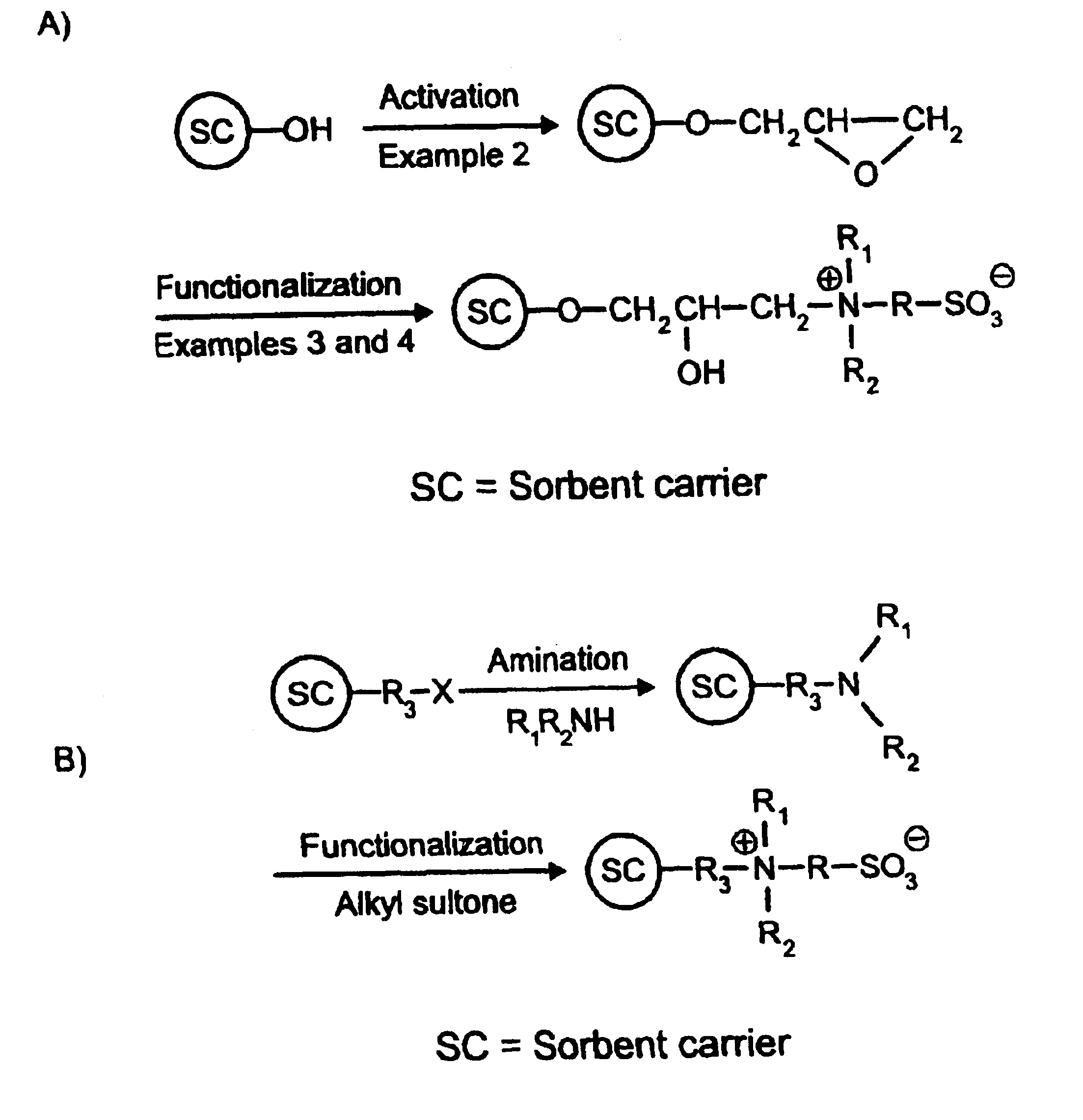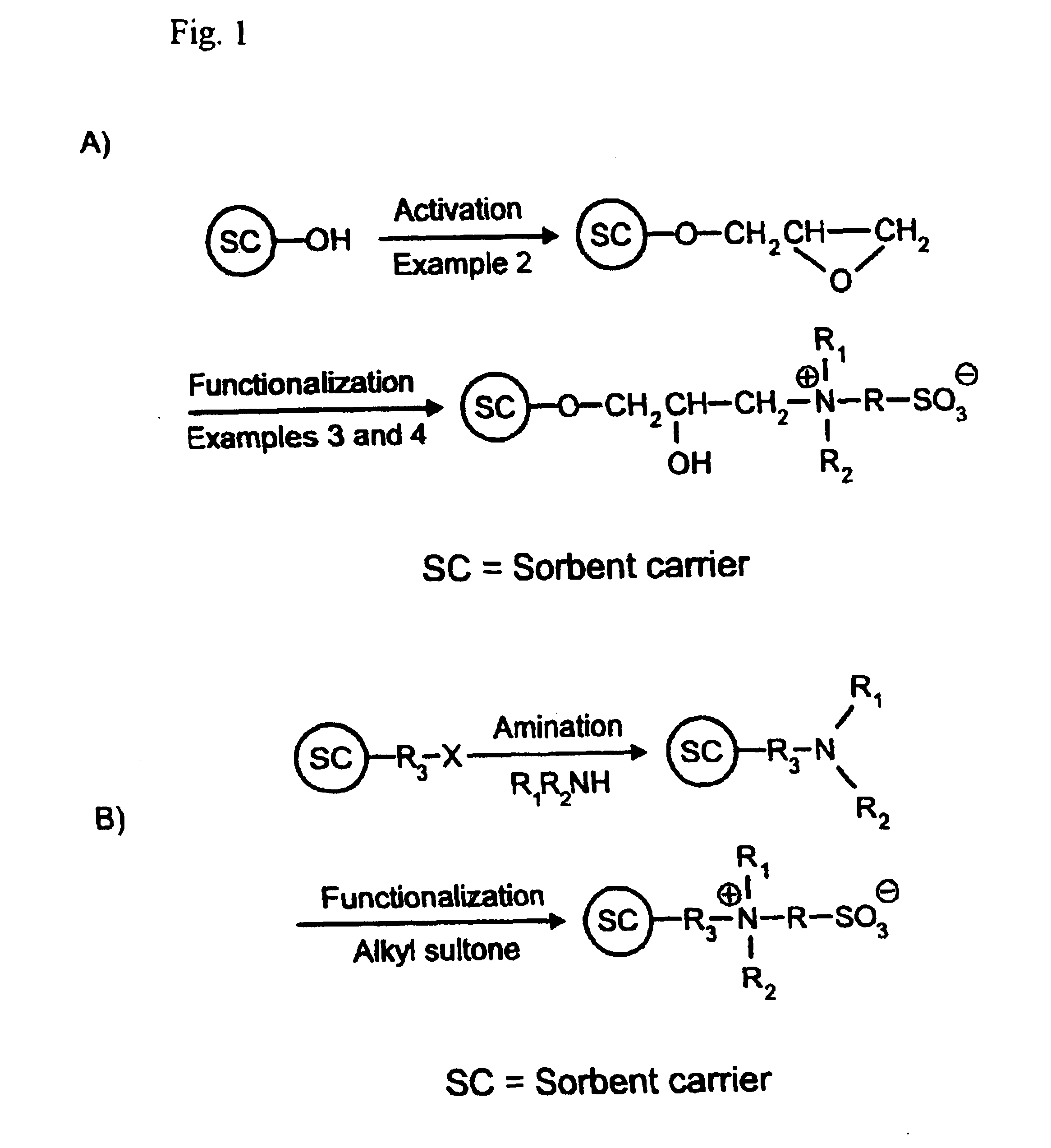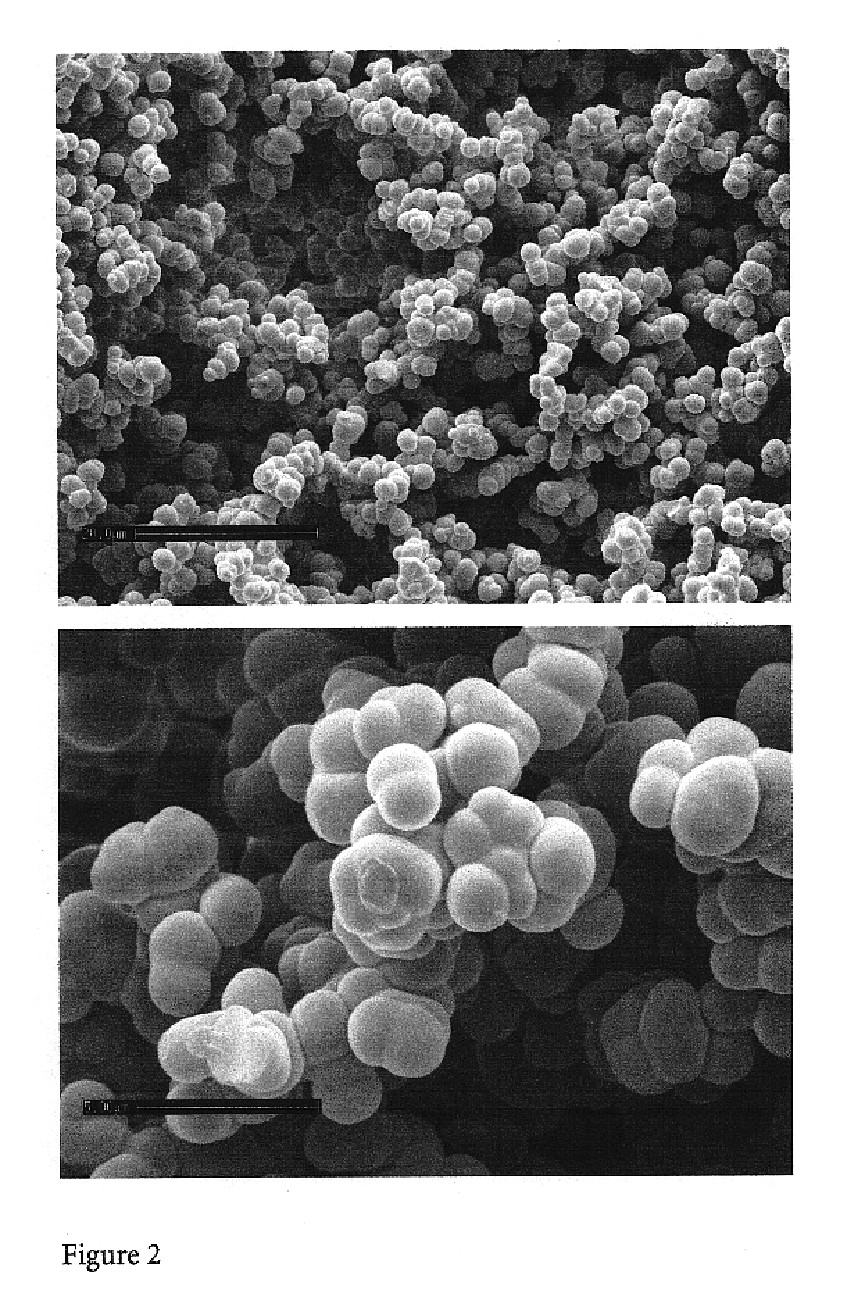Chromatography method and a column material useful in said method
a chromatography method and column material technology, applied in the field of new ionexchange chromatography method, can solve the problems of difficult eludation, no satisfactory results, and practicable limits of the ionic strength of the eluen
- Summary
- Abstract
- Description
- Claims
- Application Information
AI Technical Summary
Benefits of technology
Problems solved by technology
Method used
Image
Examples
example 1
Synthesis of 2-Dimethtylaminothanesulfonic Acid (DMAES)
[0066]2-Bromoethylsulfonic acid sodium salt (10.88 g; 0.05 mol) was dissolved in 100 mL of water in a 250 mL E-flask. Dimethylamine (12.40 g, 0.11 mol) was added to above solution, and the mixture was allowed to stand for 45 minutes at room temperature and then reacted at 70-80 ° C. for 18 hours under refluxing conditions. After cooling the solution to 40 ° C., approx. 2 g granulated charcoal was added, and the mixture was boiled for 15 minutes without a refluxing condenser. The mixture was cooled to room temperature, the charcoal was allowed to settle and the supernatant solution was thereafter filtered (Whatman GF / A) under weak suction. Further purification was carried out by letting the solution pass through a 150 mm×40 mm i.d. glass column packed with Dowex 350 UPN (Dow Chemical, Midland, Mich.) sulfonic acid strong cation exchanger in the H+ form at a flow rate of approx. 2 mL / min. The purified solution was precipitated twi...
example 2
Activation of Hydroxyethyl Functional Particles with Epoxy Groups
[0067]Five grams of 12 μm diameter Spheron 300 crosslinked porous polymer beads (a product based on 2-hydroxyethyl methacrylate as active groups; purchased from Chemapol, Brno, Czech Republic) were suspended in 30 mL of 50% aqueous NaOH in a 100 mL ground-neck flask and stirred for about 1 hour at room temperature until a uniform suspension was obtained. The resulting suspension was kept for 18 hours below 10° C., whereafter ten milliliters of dioxane was added to the flask under slow stirring for 30 minutes at room temperature. A mixture of 25 mL epichlorohydrin and 15 mL dioxane was then filled into the flask, and the activation was allowed to take place under slow stirring for 2 hours at 40° C., then for an additional 2 hours at 60° C. The thus activated particles were filtered on a glass filter and washed to neutral conditions with a large quantity of Milli-Q water, then with methanol (3×100 mL), acetone (3×100 mL)...
example 3
Zwitterionic Functionalization of Epoxy Activated Hydroxyethyl Particles
[0068]FIG. 1A relates a schematic representation of the functionalization reaction disclosed in this Example, based on activation of a hydroxy-containing sorbent carrier according to Example 2. To practice this principle, DMAES (2 g; 0.013 mol; prepared according to Example 1) was dissolved in 20 mL of aqueous 0.2 mM phosphate buffer (pH 8) in a 50 mL glass tube. The mixture was thereafter adjusted to pH 8 with 5 M NaOH under stirring. Two grams of epoxy activated polymer beads prepared according to Example 2 were added to the solution under slow stirring and reacted at 50° C. for 90 hours. The reacted beads were thereafter washed with water, methanol, and acetone on a glass filter under weak suction, and finally dried at 50° C. for 18 h in a vacuum oven. These particles were subsequently packed in a 150 mm long by 4 mm i.d. and column used for protein separation, as disclosed in Example 11.
PUM
| Property | Measurement | Unit |
|---|---|---|
| pore diameters | aaaaa | aaaaa |
| size | aaaaa | aaaaa |
| ionic strength | aaaaa | aaaaa |
Abstract
Description
Claims
Application Information
 Login to View More
Login to View More - R&D
- Intellectual Property
- Life Sciences
- Materials
- Tech Scout
- Unparalleled Data Quality
- Higher Quality Content
- 60% Fewer Hallucinations
Browse by: Latest US Patents, China's latest patents, Technical Efficacy Thesaurus, Application Domain, Technology Topic, Popular Technical Reports.
© 2025 PatSnap. All rights reserved.Legal|Privacy policy|Modern Slavery Act Transparency Statement|Sitemap|About US| Contact US: help@patsnap.com



